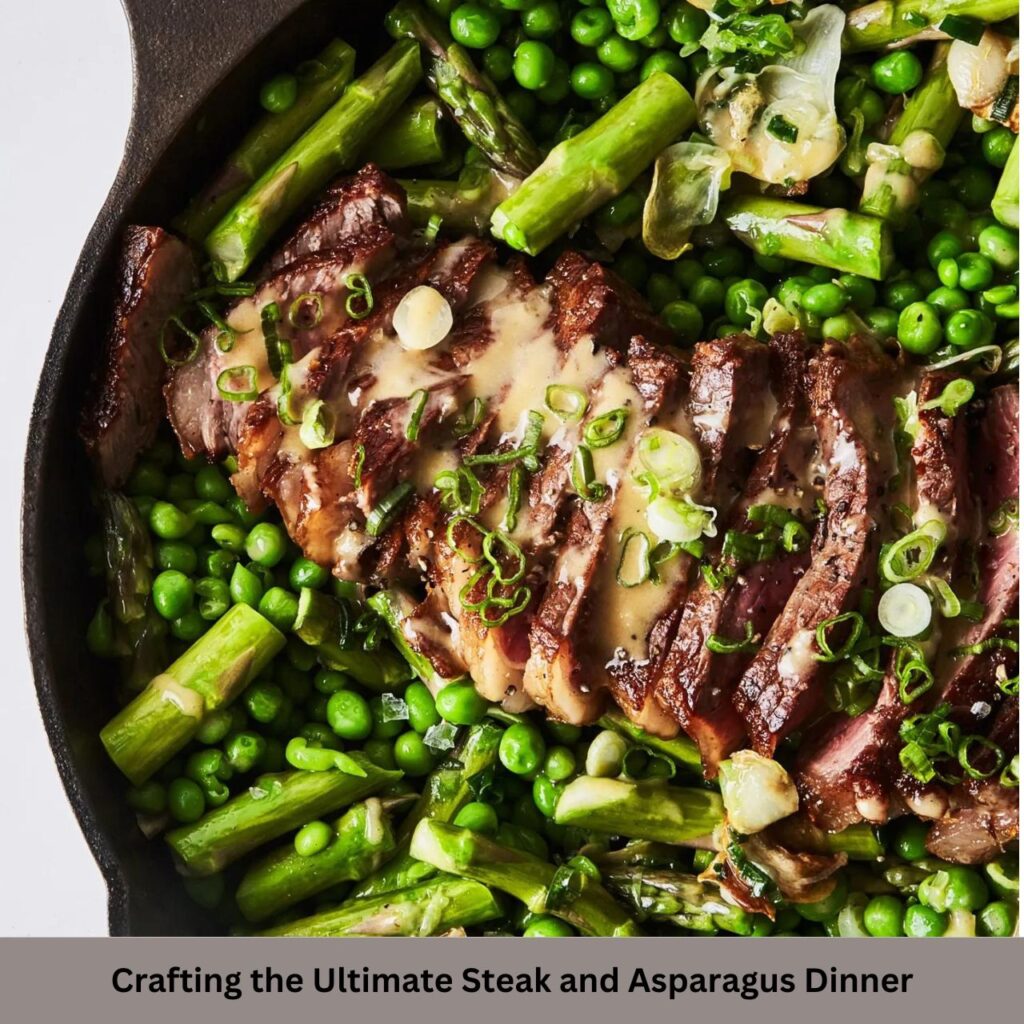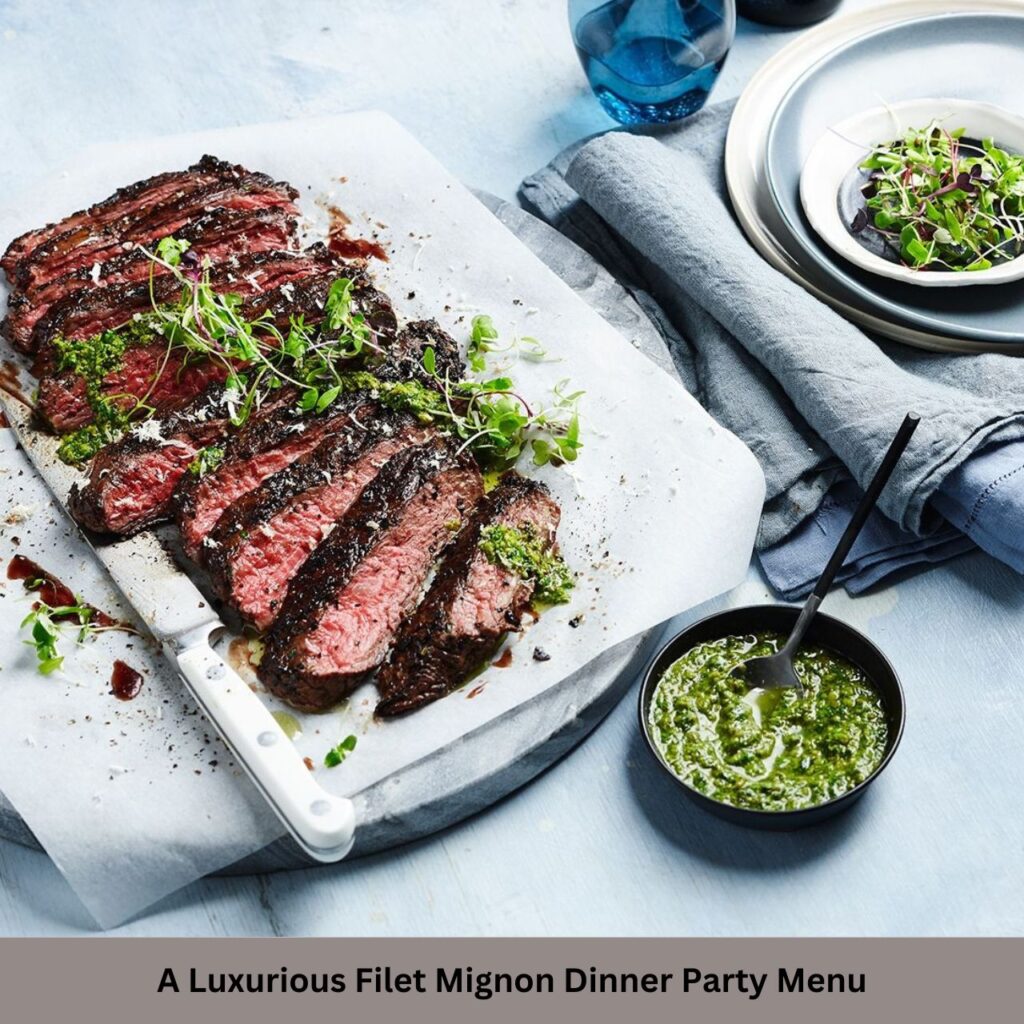Caesar Dressing Recipe, with its rich, creamy texture and sharp tang, is the unsung hero of salads. While it’s commonly associated with the classic Caesar salad, its versatility knows no bounds. It’s a dressing that brings together umami, saltiness, and a balanced zest in every bite. Whether drizzled over crisp romaine lettuce or used as a dip for crudités, its bold flavor profile makes it a must-have in any kitchen. Yet, many only experience it in its bottled, processed form, unaware of the depth and complexity that comes from making it from scratch.
Crafting Caesar dressing at home not only enhances its flavor but also allows you to tweak it to personal perfection. What makes this dressing so iconic is the blend of its simple ingredients: from sharp Parmesan cheese to the subtle brininess of anchovies. The synergy between these components creates something far more sophisticated than just a salad topper. With the right balance, Caesar dressing can elevate your meals and become a culinary staple that goes beyond the lettuce.
The History Behind Caesar Dressing Recipe

Though Caesar dressing is a global favorite, its origins are surprisingly humble. Contrary to popular belief, it wasn’t named after the Roman emperor but rather after an Italian-American chef named Caesar Cardini. In 1924, while working in Tijuana, Mexico, Cardini created the dressing during a busy Fourth of July weekend when his kitchen supplies were running low. In a pinch, he tossed together available ingredients, including eggs, garlic, Worcestershire sauce, and Parmesan cheese, over a bed of romaine lettuce. What was initially a practical solution soon became a sensation.
His creation spread like wildfire, first through Hollywood elites who frequented his restaurant, and then across the globe. Over time, the recipe evolved, with anchovies becoming a defining feature of modern versions. Caesar Cardini’s dressing has stood the test of time because of its simplicity, versatility, and bold flavors. Today, it’s more than a salad dressing—it’s a culinary legacy that’s been adapted and embraced by chefs and home cooks alike.
Why Homemade Caesar Dressing Recipe is Better Than Store-Bought
Store-bought Caesar dressing often lacks the freshness and complexity of homemade versions. Bottled dressings, filled with preservatives, artificial flavors, and excessive salt, pale in comparison to the vibrant, fresh flavors of a homemade batch. When you craft it yourself, you control the quality of ingredients. Freshly cracked black pepper, real anchovies, and hand-grated Parmesan create a more authentic, nuanced taste.
The freshness of the lemon juice and the richness of the egg yolks can’t be replicated by their processed counterparts. Additionally, homemade Caesar dressing is customizable. You can adjust the garlic intensity, tweak the saltiness, or even add a dash of heat for a personalized touch. When made at home, the dressing is also free of unnecessary additives, offering a healthier, cleaner option. There’s satisfaction in knowing exactly what’s going into your food. So, while a bottled version might be convenient, taking a few extra minutes to whip up your own Caesar dressing is a small investment for a huge flavor payoff.
The Secret to Achieving a Creamy Finish
Achieving the signature creamy finish of Caesar dressing requires an understanding of emulsification. Emulsification is the process of combining two ingredients that don’t normally mix—like oil and water—into a stable blend. In Caesar dressing, this is crucial to achieving that luxurious, smooth texture. The secret lies in adding the oil slowly while whisking continuously, which encourages the egg yolks and oil to bind. If done correctly, this creates a thick, velvety consistency without the dressing separating.
Another trick is ensuring the ingredients are at room temperature before starting, as this helps them combine more effectively. Additionally, using high-quality ingredients like extra-virgin olive oil and freshly grated Parmesan will elevate both the flavor and texture of your dressing. The balance of acidity from the lemon juice and the creaminess of the egg yolks is what gives Caesar dressing its delightful mouthfeel. It’s a delicate process but mastering it ensures that you end up with a perfectly smooth and luscious dressing every time.
Key Ingredients For Authentic Caesar Dressing Recipe

The magic of Caesar’s dressing lies in its simplicity. Each ingredient plays a pivotal role in building its distinctive flavor profile. First and foremost, fresh garlic provides a sharp bite that permeates the dressing. Anchovies, often an overlooked ingredient, contribute depth with their salty, umami-rich flavor. Egg yolks act as the binding agent, delivering the dressing’s signature creamy texture. Extra-virgin olive oil provides richness, while freshly squeezed lemon juice adds brightness and cuts through the heaviness.
Parmesan cheese, grated finely, offers a nutty, savory note that complements the other elements. Worcestershire sauce adds a hint of sweetness and complexity, rounding out the flavors. Salt and freshly ground black pepper bring everything together. While these ingredients may seem basic, their harmonious combination is what makes Caesar dressing more than just a salad condiment. When balanced correctly, they create a depth of flavor that’s rich, tangy, and utterly satisfying.
Choosing the Right Oil for Your Dressing
Oil is a foundational ingredient in Caesar dressing, but not all oils are created equal. Extra-virgin olive oil is traditionally used because of its bold flavor and smooth texture. Its slightly peppery, fruity notes complement the dressing’s other ingredients, adding richness without overpowering the other flavors. However, if you find the taste of olive oil too strong, you can blend it with a neutral oil like grapeseed or canola to mellow out the flavor.
The quality of the oil matters, as lower-quality oils can leave an unpleasant aftertaste. Cold-pressed oils are preferable for their purer, fresher flavor profiles. The type of oil you choose will ultimately influence the balance of your dressing, either enhancing the creaminess or making it taste greasy. Remember, oil also contributes to the emulsion process, so it’s essential to choose one that works well in forming a stable, creamy dressing.
Why Egg Yolks are Essential for Creaminess
Egg yolks are the unsung heroes in Caesar dressing, responsible for its velvety texture. Acting as a natural emulsifier, the lecithin in egg yolks binds the oil and water-based ingredients together, creating that sought-after creamy consistency. Without egg yolks, the dressing would lack its characteristic richness and could separate. In addition to their textural benefits, egg yolks add a subtle, buttery flavor that enhances the depth of the dressing. While some may be hesitant to use raw eggs, pasteurized eggs offer a safe alternative without compromising the dressing’s integrity.
It’s also worth noting that some modern variations of Caesar dressing substitute mayonnaise for egg yolks to simplify the process. However, this alters the flavor and texture, making it less authentic. For a traditional, luxurious Caesar dressing, egg yolks are irreplaceable. They elevate the dressing from an ordinary salad topper to a rich, indulgent sauce.
The Role of Parmesan Cheese In Caesar Dressing Recipe
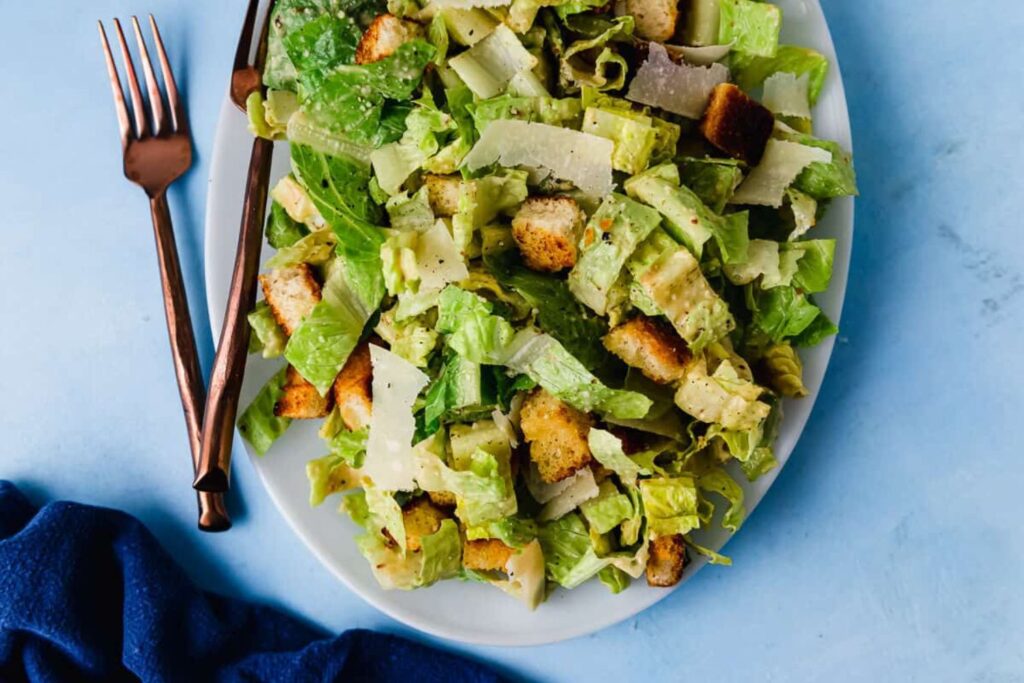
Parmesan cheese is more than just a garnish in Caesar dressing; it’s a key ingredient that adds both flavor and texture. Its nutty, umami-rich taste amplifies the overall complexity of the dressing. When finely grated, Parmesan melts into the other ingredients, contributing to the creaminess. Its sharpness also balances the richness of the egg yolks and oil, preventing the dressing from feeling too heavy.
A high-quality Parmesan, such as Parmigiano-Reggiano, is essential for achieving the best flavor. Pre-grated cheeses often lack the same depth and can introduce unwanted preservatives that alter the taste. The salty, savory qualities of Parmesan also enhance the brininess of the anchovies, creating a symphony of flavors. For a dressing that’s truly indulgent and flavorful, Parmesan is a non-negotiable component.
Anchovy: The Underrated Flavor Boost
Anchovies are often misunderstood, and dismissed by those unfamiliar with their subtlety. However, they are the backbone of authentic Caesar dressing. Rather than making the dressing taste overtly “fishy,” anchovies provide a briny, umami-rich undertone that enhances the overall flavor without overpowering it. Their saltiness adds complexity, rounding out the sharpness of the garlic and the tanginess of the lemon juice.
Anchovies essentially act as a natural flavor enhancer, deepening the dressing’s savory notes. Even if you think you don’t like anchovies, you’d likely miss them if they were absent from the dressing. They meld into the other ingredients, disappearing visually but leaving behind a robust, savory foundation. In short, anchovies elevate Caesar dressing from ordinary to extraordinary, making them an essential ingredient for anyone aiming to create a true classic.
Garlic in Caesar Dressing Recipe: A Must-Have Ingredient
Garlic, with its sharp, pungent aroma, is indispensable in Caesar dressing. It provides a bold flavor that cuts through the richness of the egg yolks and oil, adding complexity to the dressing’s profile. When finely minced or mashed into a paste, garlic blends seamlessly into the mixture, distributing its flavor evenly throughout. Its spicy, slightly bitter edge is tempered by the other ingredients, allowing it to enhance rather than dominate the dressing. Depending on your taste, you can adjust the amount of garlic to suit your preferences, but it’s hard to imagine a Caesar dressing without it.
How Lemon Juice Balances The Richness?

Lemon juice plays a pivotal role in Caesar dressing by providing the necessary acidity to balance the rich, creamy elements. Without it, the dressing could feel overly heavy and one-dimensional. The bright, tangy notes from freshly squeezed lemon juice cut through the richness of the egg yolks, oil, and Parmesan, offering a refreshing contrast that lightens the overall flavor profile.
In addition to enhancing taste, the acidity of lemon juice also aids in the emulsification process, helping to bind the ingredients together more effectively. This delicate balancing act between richness and brightness is what makes Caesar dressing so crave-worthy. Lemon juice also complements the sharpness of the garlic and the saltiness of the anchovies, ensuring that no single flavor overwhelms the palate. When used in moderation, it elevates the dressing, making each bite feel fresh and invigorating, rather than too dense or oily.
The Art of Emulsification in Caesar Dressing Recipe
Emulsification is the cornerstone of a successful Caesar dressing, as it transforms disparate ingredients into a cohesive, creamy mixture. The process involves combining fat (typically oil) with water-based ingredients like lemon juice and egg yolks. Since oil and water naturally repel each other, emulsification requires a binding agent to keep the mixture stable. In Caesar dressing, egg yolks play this role, allowing the oil and lemon juice to blend smoothly. The key to perfect emulsification is adding the oil gradually while continuously whisking.
This slow incorporation ensures that the oil breaks into tiny droplets, which the egg yolks then envelop, creating a smooth, creamy consistency. If the oil is added too quickly or whisked unevenly, the dressing may “break” and separate. Proper emulsification not only affects the texture but also ensures that the flavors are evenly distributed. A well-emulsified Caesar dressing is thick, luxurious, and has a satiny finish that clings beautifully to salad leaves or any other dish it’s paired with.
Whisk vs. Blender: Which Method Gives a Creamier Finish?
When making Caesar dressing, the method you choose to combine the ingredients can significantly impact the texture. The traditional method involves using a whisk, which gives you more control over the emulsification process. Whisking allows you to slowly incorporate the oil into the mixture, which helps in creating a stable emulsion. The downside is that it requires some elbow grease, and it’s easier to make a mistake if the oil is added too quickly. On the other hand, using a blender or food processor can make the process quicker and more foolproof.
These tools can break the oil into even smaller droplets, often resulting in an ultra-creamy, smooth finish. However, some purists argue that blenders can overwork the ingredients, altering the texture slightly, and making it almost too homogenous. Both methods have their merits, but if you’re looking for a hands-on, artisanal feel, whisking is the way to go. If you prefer ease and consistency, a blender will deliver that perfect creamy texture with minimal effort.
Step-by-Step Guide to Making Classic Caesar Dressing Recipe

Crafting the perfect Caesar dressing at home doesn’t require culinary expertise, but attention to detail is key. Start by finely mincing or mashing a few cloves of garlic, ensuring they are evenly distributed throughout the dressing. Next, whisk together your egg yolks and a small amount of Dijon mustard in a bowl—this mustard helps to stabilize the emulsion. Slowly drizzle in your olive oil, whisking constantly to form a thick, creamy base. Once the oil is incorporated, add Worcestershire sauce, finely chopped anchovies (or anchovy paste), and freshly squeezed lemon juice.
Finally, fold in grated Parmesan cheese, along with a generous pinch of salt and freshly ground black pepper. Taste as you go, adjusting the acidity with more lemon juice if needed or adding another anchovy for extra depth. Continue whisking until the dressing reaches your desired consistency, then serve immediately over your favorite salad or store it in the fridge for later use. This step-by-step process ensures a balanced, creamy Caesar dressing that you’ll want to make time and again.
How to Properly Incorporate the Ingredients
Incorporating the ingredients in the correct order is crucial for achieving the perfect balance in Caesar dressing. Begin with the foundational ingredients: garlic and egg yolks. These should be whisked together until smooth, as they set the stage for the emulsion. Next, introduce the oil—slowly and in a thin stream—to allow the egg yolks to bind with the fat. Pouring the oil too quickly will overwhelm the yolks, causing the dressing to separate.
Once a stable emulsion is formed, it’s time to add the remaining flavoring components: lemon juice, anchovies, and Worcestershire sauce. These ingredients should be folded in gently to preserve the creamy texture you’ve built. Parmesan cheese comes last, as it thickens the dressing and adds a final burst of umami. By following this order and mixing each component carefully, you’ll ensure that every bite of your Caesar dressing is balanced, flavorful, and irresistibly creamy.
Adjusting the Thickness of Your Caesar Dressing Recipe
The thickness of Caesar dressing can be tailored to suit your preferences or the dish it accompanies. If you prefer a lighter, more pourable consistency, increasing the amount of lemon juice or adding a touch of water will thin out the dressing without sacrificing flavor. For a thicker, creamier result, you can either reduce the amount of liquid or incorporate more grated Parmesan, which not only adds thickness but also intensifies the savory notes.
Another option is to add more oil slowly, but this should be done cautiously to avoid making the dressing overly oily. If you find your dressing too thick after refrigerating, simply whisk in a bit of water or lemon juice before serving. Adjusting the thickness allows you to control how the dressing coats your salad leaves or how it complements other dishes, making it versatile enough for everything from a drizzle to a rich, luxurious dip.
Adding A Personal Twist to the Classic Recipe
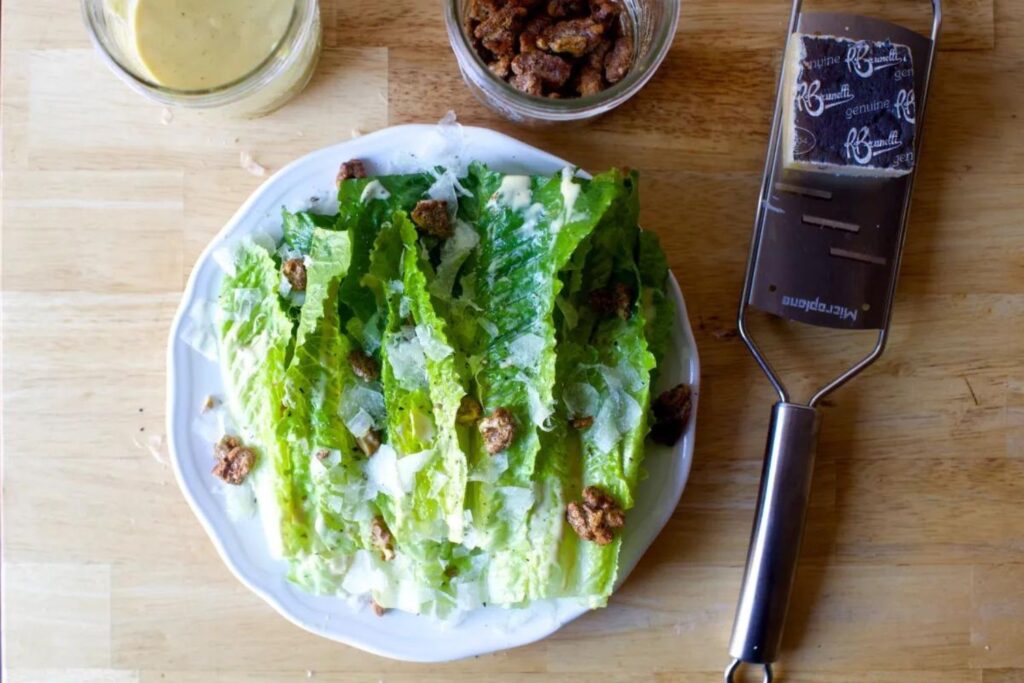
The beauty of Caesar’s dressing lies in its adaptability. While the classic recipe is timeless, adding your twist can elevate it to new heights. For a punch of heat, consider mixing in a dash of hot sauce or red pepper flakes. If you’re a fan of bold flavors, try incorporating smoked paprika or a hint of Dijon mustard for added complexity. For a unique texture, fold in finely chopped capers or sun-dried tomatoes to give the dressing a Mediterranean flair.
You could also experiment with different types of cheese; swapping out Parmesan for Pecorino Romano provides a sharper, saltier edge. Those with a penchant for sweetness might enjoy a touch of honey or maple syrup to balance the dressing’s tangy notes. The possibilities are endless, and by adding your personal touch, you can make the dressing entirely your own while staying true to its rich, creamy essence.
Common Mistakes to Avoid When Making Caesar Dressing Recipe
Though Caesar’s dressing seems simple, there are a few common pitfalls to avoid. One frequent mistake is adding the oil too quickly. This can overwhelm the egg yolks, causing the emulsion to break, which results in a thin, separated mixture. Another issue arises when the ingredients aren’t at room temperature; cold ingredients make it harder for the oil and egg yolks to blend properly, leading to a less stable dressing.
Some cooks use pre-grated Parmesan or bottled lemon juice, both of which lack the freshness and complexity needed for a truly authentic flavor. Skimping on anchovies is another misstep, as they provide the depth of umami that makes Caesar dressing stand out. Finally, over-seasoning is a risk, especially with salt, as the Parmesan and anchovies already contribute a fair amount of saltiness. By paying attention to these details, you can avoid these mistakes and ensure your Caesar dressing comes out creamy and delicious every time.
How to Fix a Broken Caesar Dressing Recipe
If your Caesar dressing breaks—meaning the oil separates from the other ingredients—don’t despair. There are simple ways to rescue it. Start by transferring the broken mixture into a separate bowl. Then, in your original bowl, whisk a fresh egg yolk or a small amount of mustard. This will act as a new emulsifying base. Slowly begin adding the broken dressing back into the bowl with the egg yolk, whisking vigorously.
The fresh yolk should help the mixture re-emulsify and bring everything back together. Alternatively, you can add a few drops of warm water to the broken dressing while whisking. The water helps bind the oil and egg yolks together, stabilizing the emulsion. If all else fails, blending the dressing in a food processor can often bring it back to a smooth consistency. Fixing a broken dressing requires patience, but with these techniques, you’ll be able to salvage it and enjoy a perfectly creamy result.
How Long Can You Store Homemade Caesar Dressing?
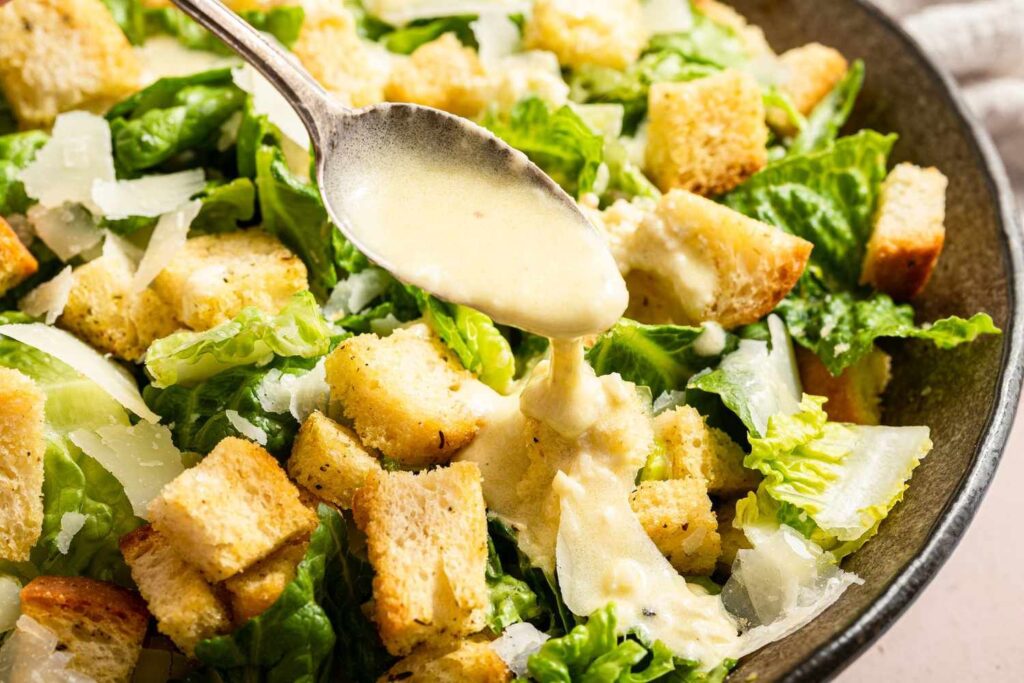
Homemade Caesar dressing, due to its raw egg content, doesn’t have the same shelf life as store-bought varieties filled with preservatives. When stored in an airtight container and kept in the refrigerator, it typically lasts between three to five days. To ensure maximum freshness, use pasteurized eggs if you’re concerned about food safety. Before serving, give the dressing a good whisk or shake, as some separation may occur during refrigeration.
If the dressing has thickened too much while chilling, add a little water or lemon juice to loosen it up. While it’s tempting to make large batches, it’s best to prepare just enough for a few uses to enjoy the freshest flavor. Always use your judgment—if the dressing develops an off smell or color, it’s better to discard it. Although homemade Caesar dressing doesn’t last as long as store-bought, its superior flavor and texture make it worth the effort to whip up a fresh batch.
Pairing Caesar Dressing with Different Salads
While Caesar dressing is traditionally paired with romaine lettuce, its bold, creamy flavor can enhance a wide variety of salads. For a twist on the classic, try using mixed greens like arugula or spinach, which add a peppery note that complements the richness of the dressing. Kale, with its sturdy texture, is another excellent choice, as it holds up well under the weight of the dressing and benefits from the added moisture and flavor.
For those seeking a heartier salad, tossing the dressing with grilled chicken, roasted vegetables, or even quinoa can transform the dish into a satisfying meal. Caesar dressing also pairs wonderfully with more unconventional salad ingredients, such as roasted beets, crispy bacon, or hard-boiled eggs, adding depth and contrast to their natural flavors. The key to pairing Caesar dressing with different salads is balancing the richness of the dressing with ingredients that either contrast with or enhance its creaminess, ensuring that each bite remains flavorful and exciting.
Beyond Salad: Other Dishes That Benefit from Caesar Dressing Recipe
Caesar dressing is far more versatile than its association with salad suggests. Its creamy, tangy, and umami-rich flavor makes it a perfect complement to a range of dishes beyond leafy greens. Use it as a spread for sandwiches and wraps, where it adds a punch of flavor and moisture without the heaviness of mayonnaise. It’s equally delicious as a dipping sauce for crudités, roasted vegetables, or even crispy fries. Caesar dressing can also serve as a marinade for grilled meats like chicken or shrimp, infusing them with a savory, zesty kick before they hit the grill.
For those who enjoy bold flavors, drizzling Caesar dressing over roasted potatoes or using it as a topping for baked salmon can elevate these dishes with minimal effort. It also works as a base for pasta salads, adding a creamy, tangy note that ties together ingredients like cherry tomatoes, cucumbers, and feta. The versatility of Caesar dressing extends far beyond salad, making it a culinary multi-tasker in any kitchen.
Caesar Dressing Variations: Creamy With A Kick

For those looking to put a personal spin on classic Caesar dressing. Adding a bit of spice can bring a whole new dimension to the flavor profile. A simple addition of cayenne pepper, hot sauce, or red pepper flakes can add a fiery kick that contrasts beautifully with the rich, creamy base. Smoked paprika offers a more subtle, smoky heat that pairs well with grilled meats or roasted vegetables. If you prefer a more exotic twist, try incorporating ingredients like Sriracha or chipotle peppers for a spicier, more complex dressing.
Another variation is to swap out the lemon juice for lime, which adds a sharper citrus note. And works particularly well with seafood-based salads. For those who love garlic, doubling the amount or even roasting the garlic beforehand can intensify the flavor, creating a bolder, more robust dressing. Whether you’re after heat, smoke, or an extra punch of citrus. These variations allow you to customize Caesar dressing to suit your palate while keeping its creamy essence intact.
Dairy-Free Caesar Dressing Options
For those who are lactose intolerant or following a dairy-free diet, it’s still possible to enjoy a creamy Caesar dressing. Traditional Parmesan cheese can be substituted with nutritional yeast, which mimics the nutty, savory flavor of cheese without the dairy. Many store-bought dairy-free Caesar dressings also use cashews or sunflower seeds as a base. Blended with water or almond milk to create a smooth, creamy texture that rivals the original. If you’re making it at home, soaked cashews can be pureed into a thick, silky base, which provides the same rich mouthfeel as dairy without any of the lactose.
Olive oil and egg yolks are naturally dairy-free, so the rest of the dressing remains true to its classic flavor. To add tanginess, a bit of mustard or additional lemon juice can stand in for the acidity that Parmesan would typically bring. Dairy-free Caesar dressing options are not only delicious but also accessible to anyone seeking a plant-based or lactose-free alternative.
Caesar Dressing Recipe for Vegans: No Eggs, No Problem
Creating a vegan version of Caesar dressing requires a bit of ingenuity but yields equally satisfying results. Instead of egg yolks, many recipes use blended raw cashews or silken tofu to achieve the creamy texture that traditional Caesar dressing is known for. These plant-based alternatives replicate the smoothness of the original without the use of animal products. Nutritional yeast is a staple in vegan Caesar dressings, as it provides the cheesy, umami flavor typically delivered by Parmesan.
Anchovy paste, a key ingredient in traditional Caesar, can be swapped for capers or miso paste, both of which offer that essential briny, salty taste. A touch of Dijon mustard adds to the depth of flavor. And extra-virgin olive oil keeps the dressing rich and luxurious. Lemon juice, garlic, and black pepper remain unchanged, ensuring that the dressing retains its bright, tangy bite. With a few thoughtful substitutions, vegan Caesar dressing can be just as flavorful and satisfying as the original, without compromising on taste or texture.
Caesar Dressing: A Staple For Your Culinary Arsenal
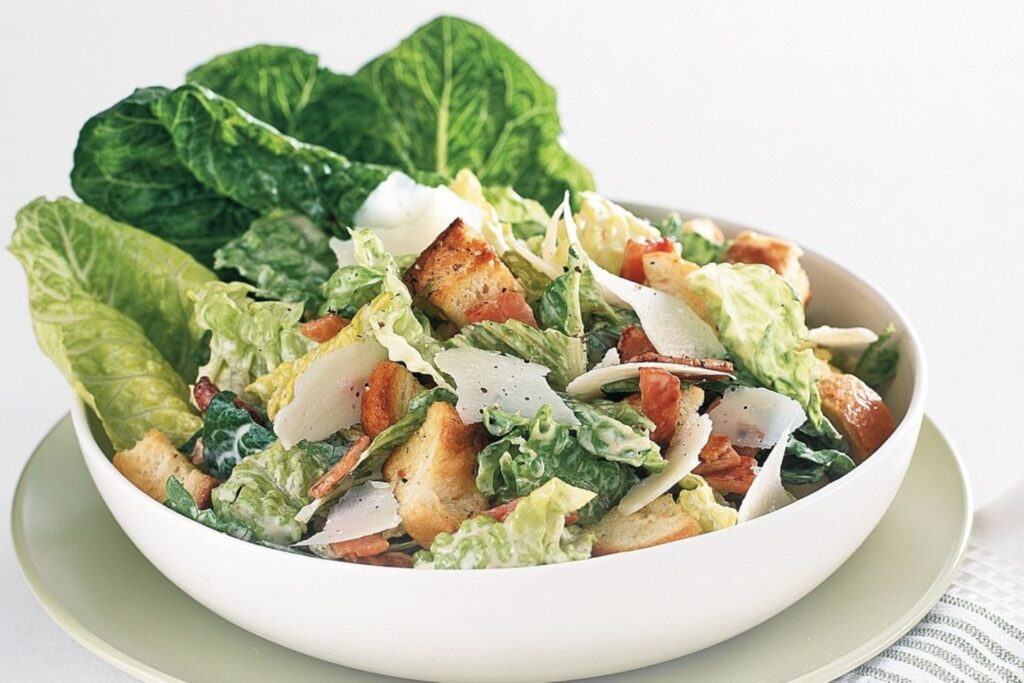
Dressing Caesar is more than just a salad topper—it’s a versatile ingredient that can elevate a wide range of dishes. Once you’ve mastered the art of making it from scratch, it can quickly become a staple in your kitchen. Ready to enhance everything from salads to sandwiches, dips, and even marinades. Its unique blend of creamy, tangy, and savory flavors makes it a go-to for adding depth and richness to meals with minimal effort.
Customizing the dressing to suit dietary preferences, whether dairy-free, vegan, or with a spicy kick, ensures everyone can enjoy it. Keeping a jar of freshly made Caesar dressing in the fridge opens up endless possibilities for quick and delicious meals. This dressing transforms ordinary ingredients into something special, whether you toss it with crispy romaine. Drizzle it over grilled vegetables, or use it as a dip for roasted potatoes. Once you’ve discovered the magic of Caesar dressing, it’s hard to imagine your kitchen without it.
YouTube Video
Conclusion
Caesar dressing, in its most authentic form, is a culinary masterpiece that brings together the richness of egg yolks. The umami of Parmesan and anchovies, and the bright acidity of lemon juice. When made from scratch, it transcends the limitations of its bottled counterpart, offering a depth of flavor that can transform any meal. Whether you’re adhering to the classic recipe or experimenting with your variations. Mastering Caesar dressing is a rewarding endeavor that will elevate your culinary repertoire.
Its versatility allows it to shine in traditional salads or more inventive dishes. Making it an invaluable asset in the kitchen. As you refine your technique, you’ll come to appreciate the balance of flavors and textures that make Caesar dressing truly exceptional. From weeknight dinners to special occasions, this dressing is the secret weapon that can add a creamy, tangy, and utterly delicious finish to any dish.

